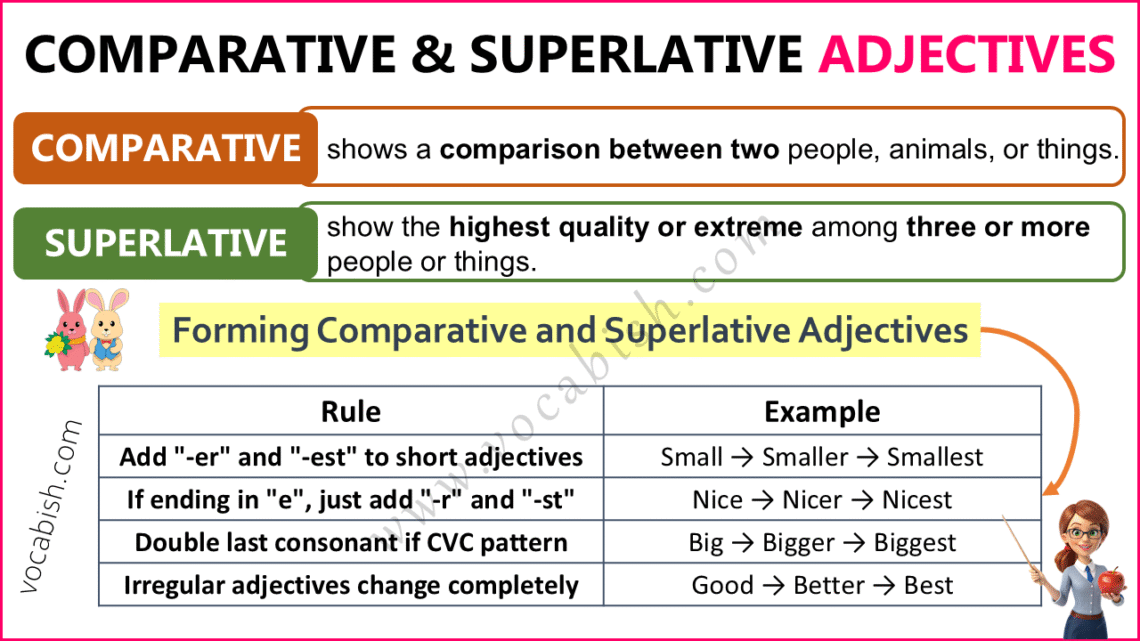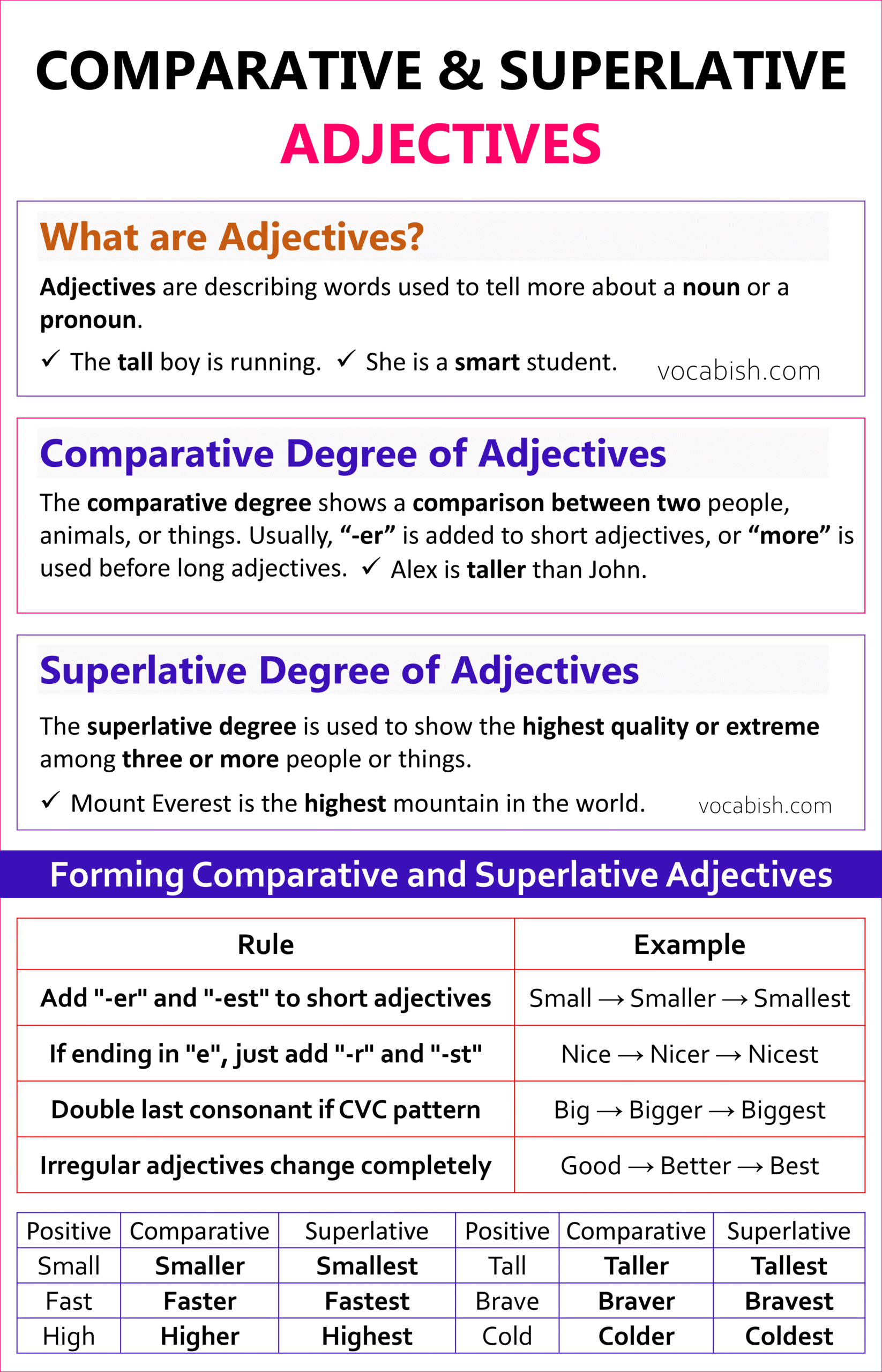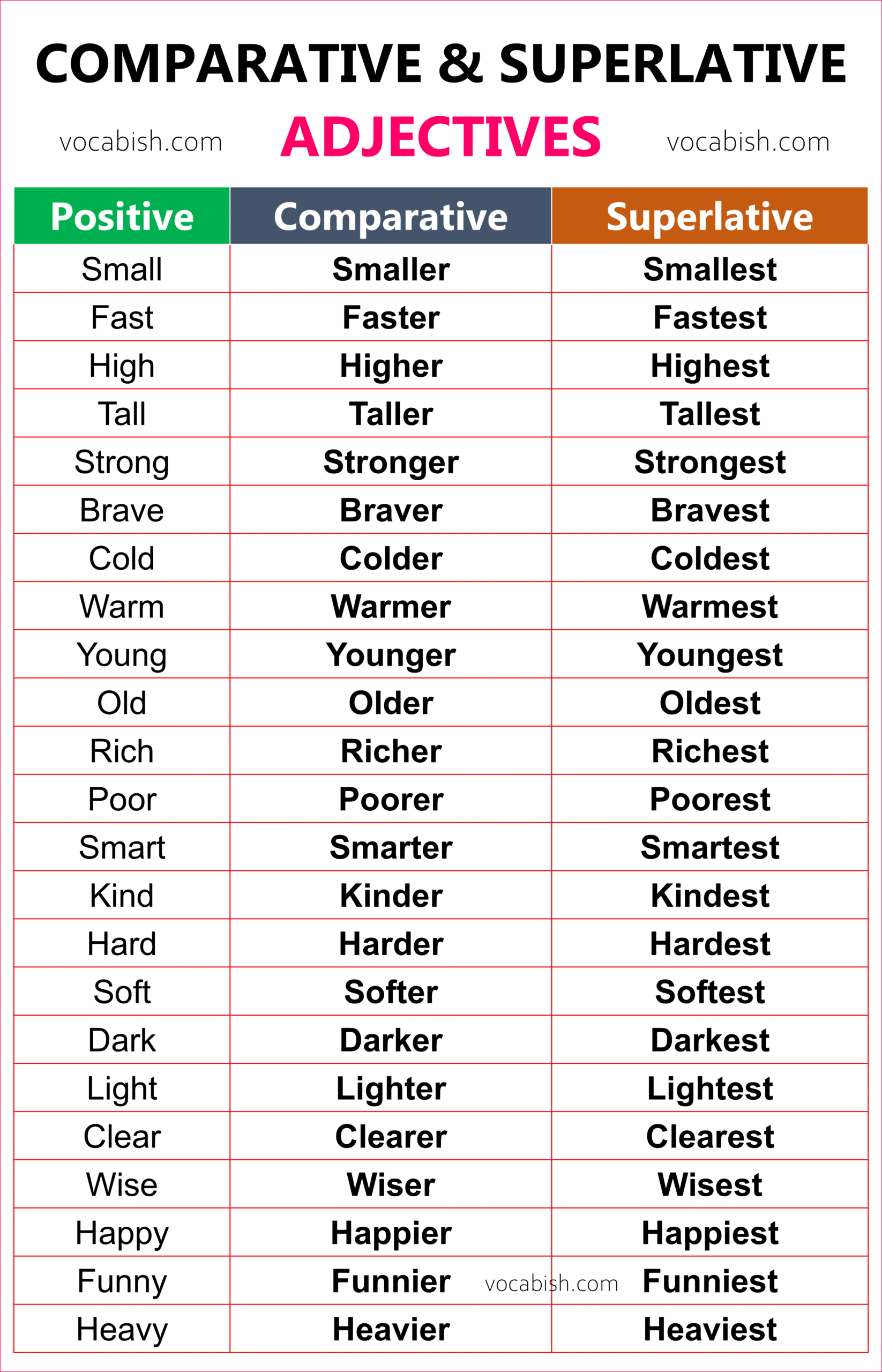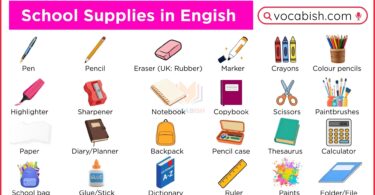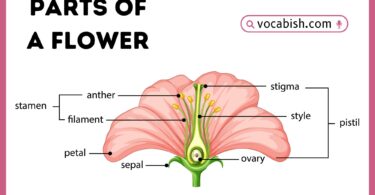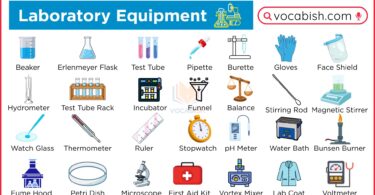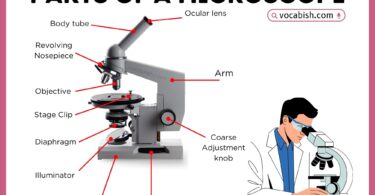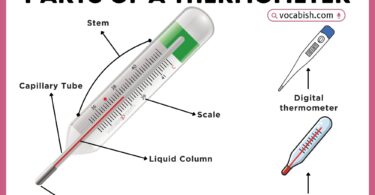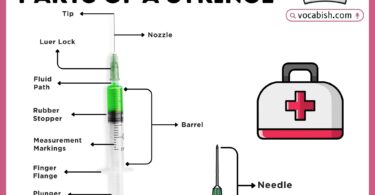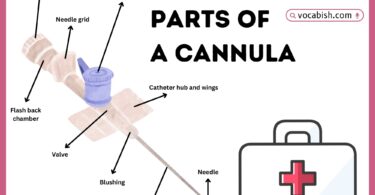Adjectives make our sentences more interesting and clear. They describe nouns — people, places, or things. When we compare two or more nouns, we use comparative and superlative adjectives.
In this article, you will learn what adjectives are, how to form comparative and superlative degrees, and when to use them — with easy examples and useful rules.
What are Adjectives?
Adjectives are describing words used to tell more about a noun or a pronoun.
Examples:
➡ The tall boy is running.
➡ She is a smart student.
Here, tall and smart are adjectives because they describe the nouns boy and student.
Comparative Degree of Adjectives
The comparative degree shows a comparison between two people, animals, or things. Usually, “-er” is added to short adjectives, or “more” is used before long adjectives.
Examples:
➡ Alex is taller than John.
➡ This book is more interesting than that one.
Key Tip: The comparative form often uses the word “than” to show the difference.
Superlative Degree of Adjectives
The superlative degree is used to show the highest quality or extreme among three or more people or things.
We usually add “-est” to short adjectives or use “most” before long adjectives.
Examples:
➡ Mount Everest is the highest mountain in the world.
➡ This is the most beautiful flower in the garden.
Key Tip: The superlative form usually uses “the” before it.
Rules for Forming Comparative and Superlative Adjectives
| Type of Adjective | Comparative Form | Superlative Form | Example |
|---|---|---|---|
| One-syllable words | Add -er | Add -est | tall → taller → tallest |
| Ends with -e | Add -r, -st | Add -st | large → larger → largest |
| Ends with one consonant + vowel + consonant | Double the last consonant | Double the last consonant + -est | big → bigger → biggest |
| Two-syllable ending in -y | Change y → i and add -er / -est | Change y → i and add -est | happy → happier → happiest |
| Two or more syllables | Use more / most | Use most | beautiful → more beautiful → most beautiful |
| Irregular adjectives | Change completely | Change completely | good → better → best / bad → worse → worst |
Examples of Comparative and Superlative Adjectives
| Positive | Comparative | Superlative |
|---|---|---|
| big | bigger | biggest |
| fast | faster | fastest |
| clever | cleverer | cleverest |
| old | older | oldest |
| happy | happier | happiest |
| large | larger | largest |
| pretty | prettier | prettiest |
| long | longer | longest |
| high | higher | highest |
| kind | kinder | kindest |
| good | better | best |
| bad | worse | worst |
| beautiful | more beautiful | most beautiful |
| difficult | more difficult | most difficult |
| interesting | more interesting | most interesting |
| expensive | more expensive | most expensive |
| easy | easier | easiest |
| young | younger | youngest |
| dirty | dirtier | dirtiest |
| thin | thinner | thinnest |
Summary on Degrees of Comparison
To describe or compare, you use adjectives in three degrees:
- Positive – describes one thing (She is tall.)
- Comparative – compares two things (She is taller than him.)
- Superlative – compares three or more things (She is the tallest of all.)
Learning these forms helps you speak and write more naturally in English.
FAQs About Comparative and Superlative Adjectives
What is a comparative adjective?
A comparative adjective shows a difference between two nouns, like bigger or smarter.
What is a superlative adjective?
A superlative adjective shows the highest degree of quality, like best or tallest.
How do I form comparatives for long adjectives?
Use “more” before the adjective.
Example: more careful, more expensive.
When do I use “most”?
Use “most” before long adjectives for the superlative form.
Example: most comfortable, most beautiful.
What are irregular comparative and superlative adjectives?
Some adjectives change form completely:
good → better → best
bad → worse → worst
Comparative and superlative adjectives make your English clear, expressive, and natural.
They help you compare things and express degrees of quality easily.
By practising daily, you can master these forms and use them confidently in both speaking and writing.
Read More

